LEAH CONWAY
Seasonal Naturalist, Blacklick Woods
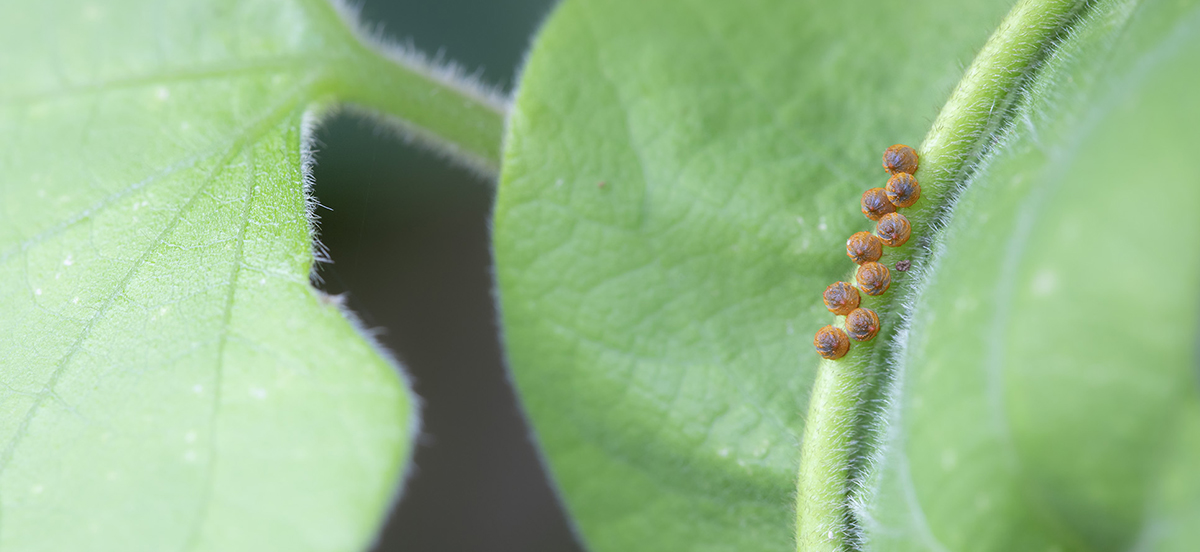
Life begins for the rich black and metallic blue pipevine swallowtail as a round, orange and pumpkin-like egg roughly one-quarter the size of a pencil eraser. Females typically deposit their eggs in clusters on the stems of pipevine plants, where they’ll develop for four to 10 days. After hatching, their first act of caterpillarhood is consuming their egg casing.
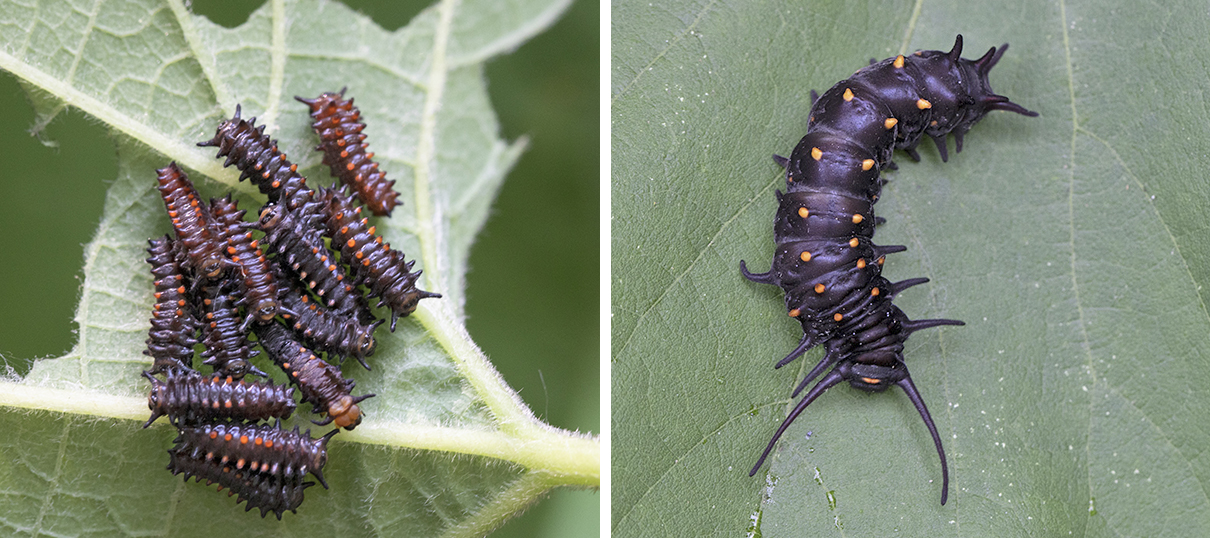
As larvae, they’ll munch away for up to four weeks while trying to avoid the attention of hungry birds. Fortunately, all of the host plants for pipevine swallowtails contain some concentration of aristolochic acids, which make them toxic to predators. After growing to be about the size of your pinky finger, they’ll wander from their host plant to find a suitable site to build their chrysalis and pupate.
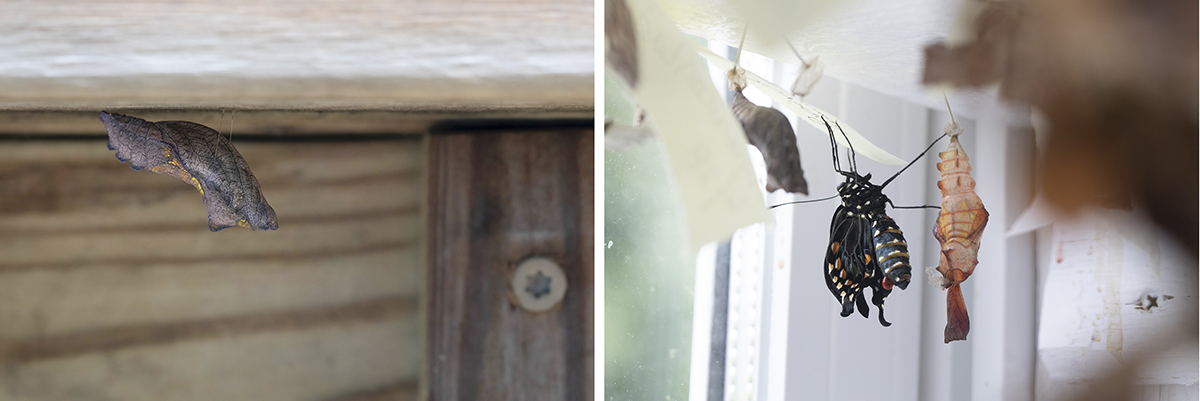
Pupation will last anywhere from 10-20 days, until the chrysalis changes in color, cracks open, and the adult butterfly emerges! It will spend several hours stretching and drying its wings, and then finally begin the final stage of its life, adulthood, which will last anywhere from six to 30 days.
Adulthood looks different for males and females – males will spend most of their time searching for females to mate with, while females will use their time to feed until mating and reproducing occurs. However, for both, their bright orange spots serve to tell predators that they don’t taste good – a trait many other butterflies mimic to avoid predation!
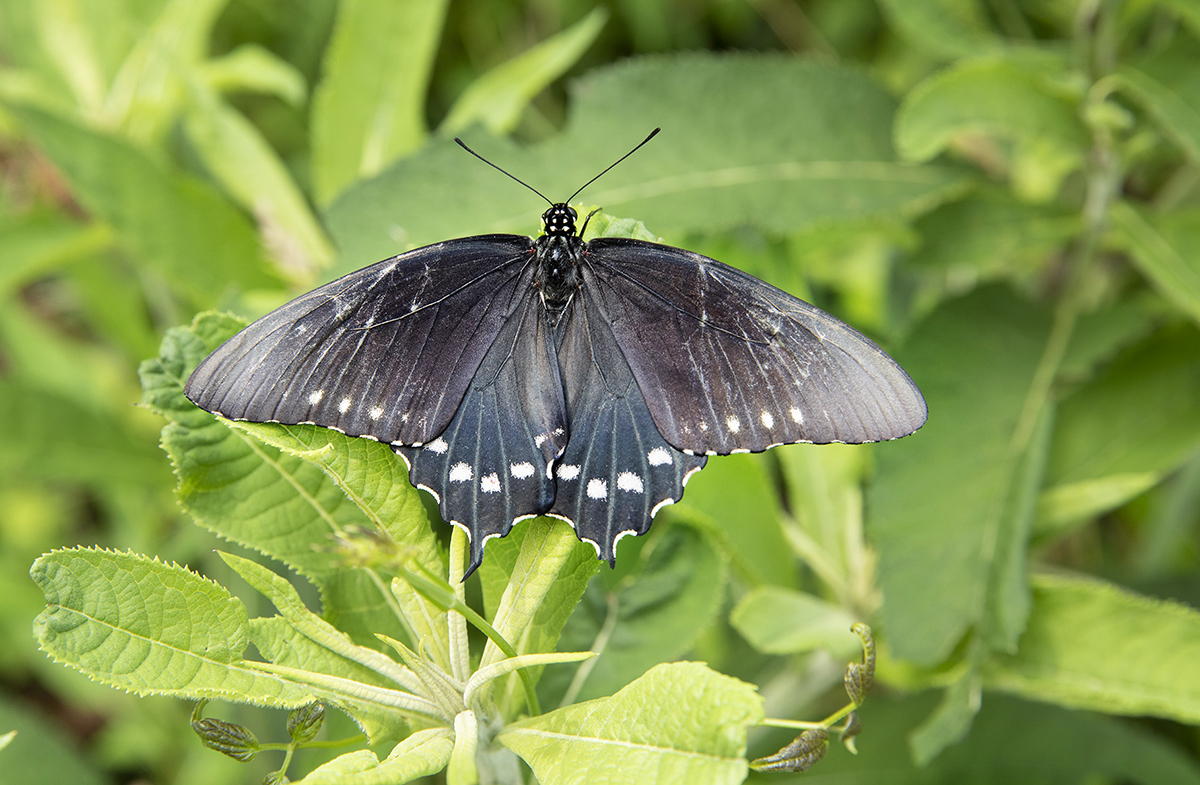
If you’d like to witness any or all of this marvelous metamorphic process, consider planting Virginia snakeroot or pipevine to provide a food source for caterpillars. Additionally, a number of native flowering plants like butterfly weed (a hardy, easy to grow, native perennial that will also attract monarch caterpillars and other pollinators), wild bergamot or ironweed (more easy to grow native perennials which are sure to attract pollinators of all kinds), thistles, or non-native lantana will provide nectar for adults.
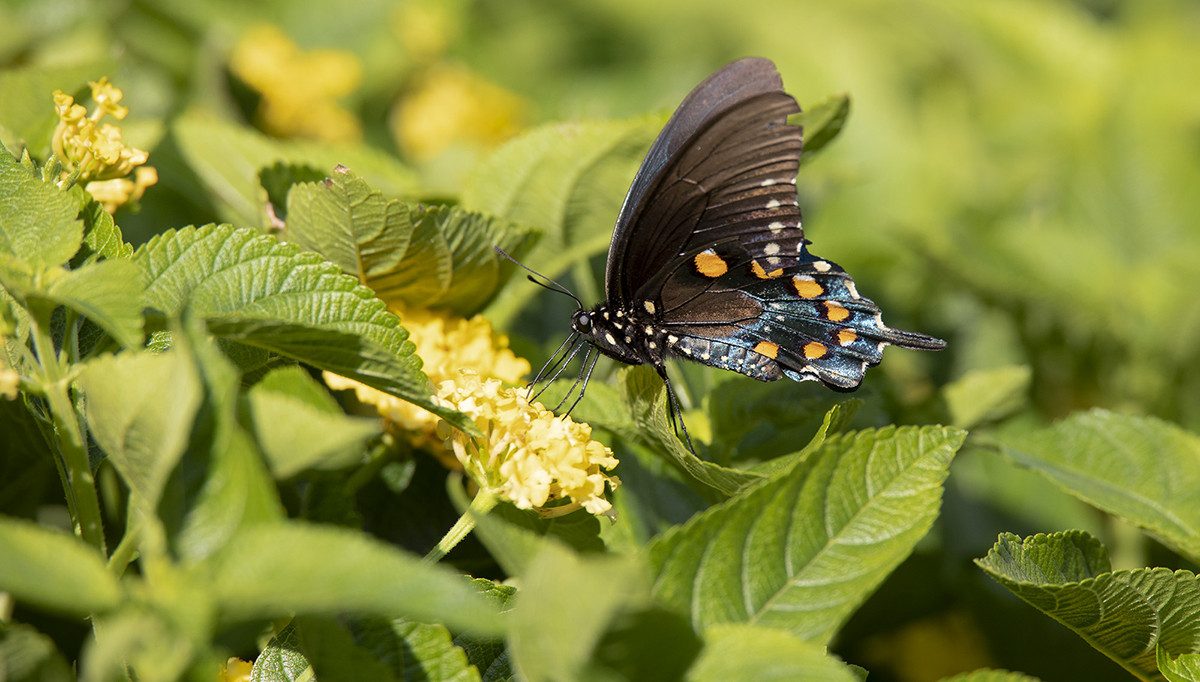

Awesome summary of the pipeline swallowtail life history!!!
Running to get wild bergamot now!! would love to watch these lovelies!
Thank you for information.
First time I have found eggs and tiny cats on the pipe vine I have grown several years. I’m bringing some to safety to raise to caterpillar. Live in Harford County, Maryland .
I have been growing milkweed for years and raising the monarchs from egg to butterfly.
So fascinating. Truly a miracle seeing the growth.
I had some on my tree I plucked off and threw on otherwise of my wall. Then I got the lens app nd took a pick and realized I messed up. I have one more on my tree a blood orange tree but it does not seem to be growing. I hope I did not hurt them
We’ve hosted monarchs, black swallowtails, giant swallowtails, gulf and variegated fritillaries in our yard. This year was my first year to successfully plant and keep a pipevine alive, and we were rewarded with devil red colored caterpillars that have finally moved on to make their chrysalides. We’ve had a relatively mild, damp summer on the upper TX coast this year, thank the Lord (although we could have done without Beryl), I’ve had wild bergamot for four years now and it has NEVER bloomed. I don’t know why, but it’s frustrating! All the butterflies love the vervains, zinnias, butterfly weed, and cosmos. They completely ignore my coneflowers, but the bees love them.